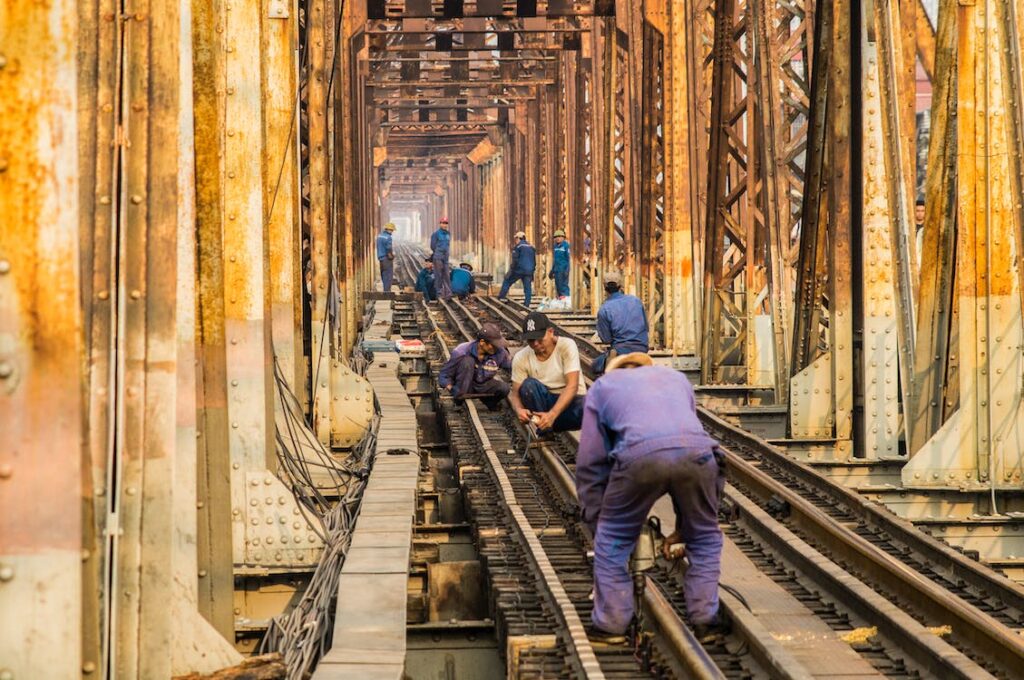The construction industry is one of the largest and most important sectors of the global economy, responsible for the creation of the buildings, infrastructure, and homes that shape the world around us. Over the past few years, the industry has been undergoing a digital transformation, with new technologies and innovations changing the way that builders and contractors approach their work. From the use of drones and robotics to sustainable building practices and advanced automation, the construction industry is evolving rapidly, with new developments and trends emerging every year.
In this blog, we will explore what the future of the construction industry might look like in the next five, ten, or twenty years, and how builders and contractors can prepare for these changes. We will examine the impact of technology on the construction industry, including the use of drones, robotics, augmented reality, and virtual reality. We will also explore how the industry is responding to the growing demand for sustainability and eco-friendliness, with new materials and practices that reduce waste and minimise the industry’s impact on the environment.
Finally, we will look at how builders and contractors can prepare for the future by staying informed and up-to-date on the latest trends and technology. We will explore the importance of training and education, collaboration and partnerships with technology providers and suppliers, and the need for a culture of continuous improvement. By embracing new technology and innovation, and by adopting sustainable and eco-friendly practices, builders and contractors can position themselves to thrive in the evolving landscape of the construction industry.

In the next ten years, the construction industry will become increasingly focused on sustainability and green building practices. There is growing concern about the impact of construction on the environment, and the industry is responding by adopting new eco-friendly and energy-efficient materials. Sustainable materials like bamboo, hempcrete, and mycelium-based materials are becoming more popular, and traditional building materials like concrete and steel are being produced with lower carbon emissions. Builders are also directing their attention to reducing waste and recycling materials. In addition, we can expect to see greater adoption of Building Information Modeling (BIM) technology, which allows for more efficient and accurate design and construction processes. BIM software can create detailed digital models of buildings, allowing builders to identify potential issues before construction begins, which helps to save time and reduce costs.
In addition to drones and robotics, the next five years will also see an increase in the use of augmented reality (AR) and virtual reality (VR) in the construction industry. AR and VR technologies can be used to create immersive experiences that allow builders to visualise designs in three dimensions, identify potential issues, and make modifications before construction begins. This technology can also be used for training purposes, allowing workers to simulate various scenarios and practice safety protocols in a virtual environment. The use of AR and VR can help improve collaboration and communication among all parties involved in a construction project, leading to more efficient and accurate decision-making.
In the next twenty years, the construction industry will be dominated by advanced automation and artificial intelligence (AI). Smart materials will become increasingly popular, materials that can adapt to changing conditions and provide a range of functions such as insulation, lighting, and energy generation. AI will be used to monitor and optimise construction processes in real-time, making it possible to adjust construction processes in response to changing conditions. AI will also help to improve safety on construction sites, by identifying potential hazards and reducing the risk of accidents. In addition, 3D printing technology will play a larger role in the industry, allowing for faster and more cost-effective construction of buildings and infrastructure. 3D printing can create entire structures from scratch, reducing the need for human labour and reducing costs.
To prepare for these changes, builders and contractors need to stay informed and up-to-date on the latest industry trends and technology. Attending conferences and trade shows is a great way to learn about new developments and network with other professionals in the field. It is also essential to invest in training and education for yourself and your team to ensure that you have the skills and knowledge needed to work with new technology and materials. In addition, it is important to be adaptable and flexible in your approach to construction. As new technology and materials are introduced, builders and contractors need to be able to adapt their methods and processes to stay competitive. Embracing new technology and innovation will be key to staying ahead of the curve in the evolving construction industry.

To stay competitive in the evolving construction industry, builders and contractors must also prioritise collaboration and partnerships with technology providers and suppliers. Collaboration can help bridge the gap between industry needs and technological capabilities, leading to the development of new products and services that can improve construction processes and outcomes. Builders should also prioritise relationships with suppliers of sustainable and eco-friendly materials to ensure access to the latest innovations in this space. In addition, builders should embrace a culture of continuous improvement, constantly seeking feedback and input from workers and clients to identify areas for improvement and new opportunities for growth. By fostering a culture of collaboration and continuous improvement, builders can adapt to the changing landscape of the construction industry and position themselves for long-term success.
The future of the construction industry is bright, with new technologies and innovations offering opportunities for growth, efficiency, and sustainability. From drones and robotics to augmented and virtual reality, the industry is becoming more digitised and automated, with new tools and processes that can improve safety, quality, and productivity. At the same time, the industry is responding to the growing demand for sustainability and eco-friendliness, with new materials and practices that reduce waste and minimise the industry’s impact on the environment.
To stay competitive in this changing landscape, builders and contractors must prepare for the future by embracing new technology and innovation, and by adopting sustainable and eco-friendly practices. This requires a commitment to training and education, collaboration and partnerships with technology providers and suppliers, and a culture of continuous improvement. By staying informed and up-to-date on the latest trends and technology, builders and contractors can position themselves to thrive in the evolving construction industry, and to continue to shape the world around us for generations to come.
It is an exciting time to be in the construction industry, with new developments and trends emerging every year. By embracing these changes and preparing for the future, builders and contractors can ensure that they are well-positioned to take advantage of new opportunities, and to continue to be a driving force behind the growth and development of the global economy.
A competent construction software will undoubtedly help you maximise profit by making use of good project management functionality, estimate and financial/accounting tool functionality, job management, scheduling and planning and support functionalities and more. WunderBuild is a construction management software that aims to provide all of these functionalities and more to bring out the best outcomes for a project.
It is currently offering a free trial, visit here to try WunderBuild for free.



